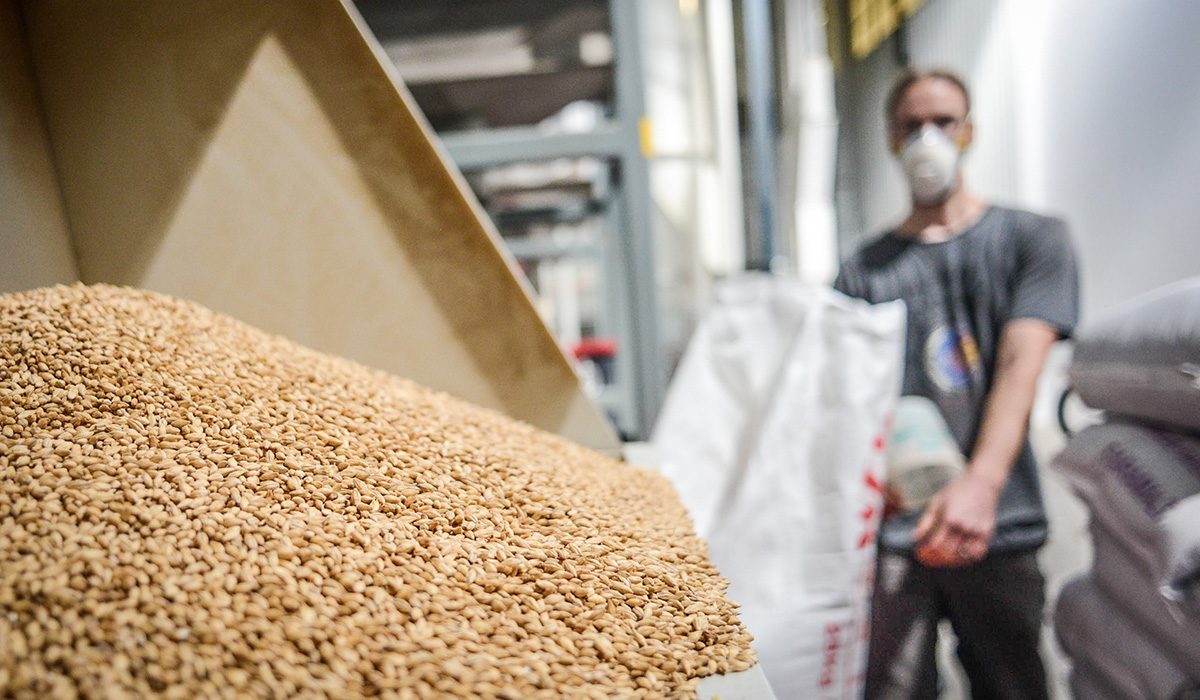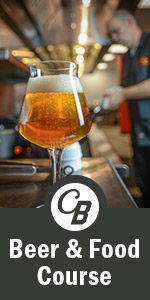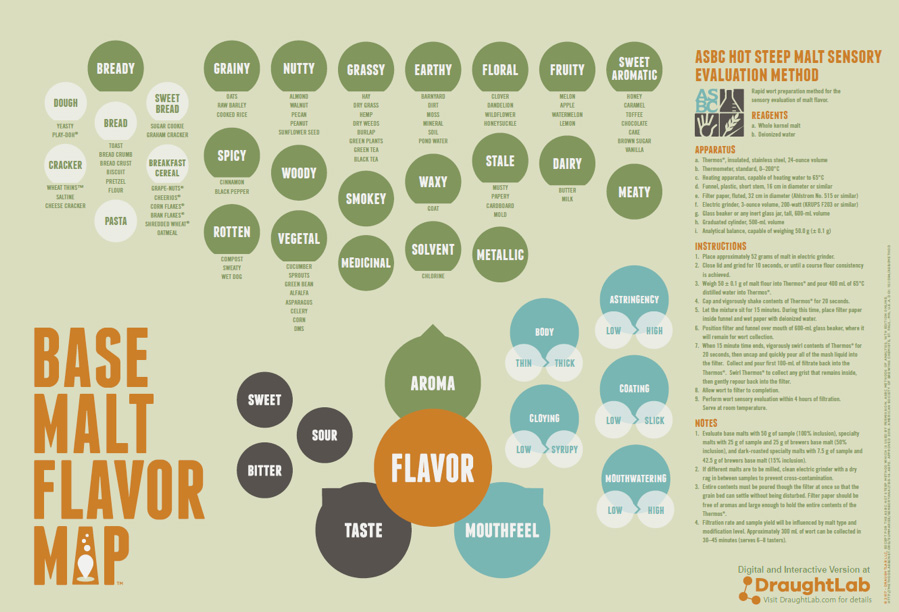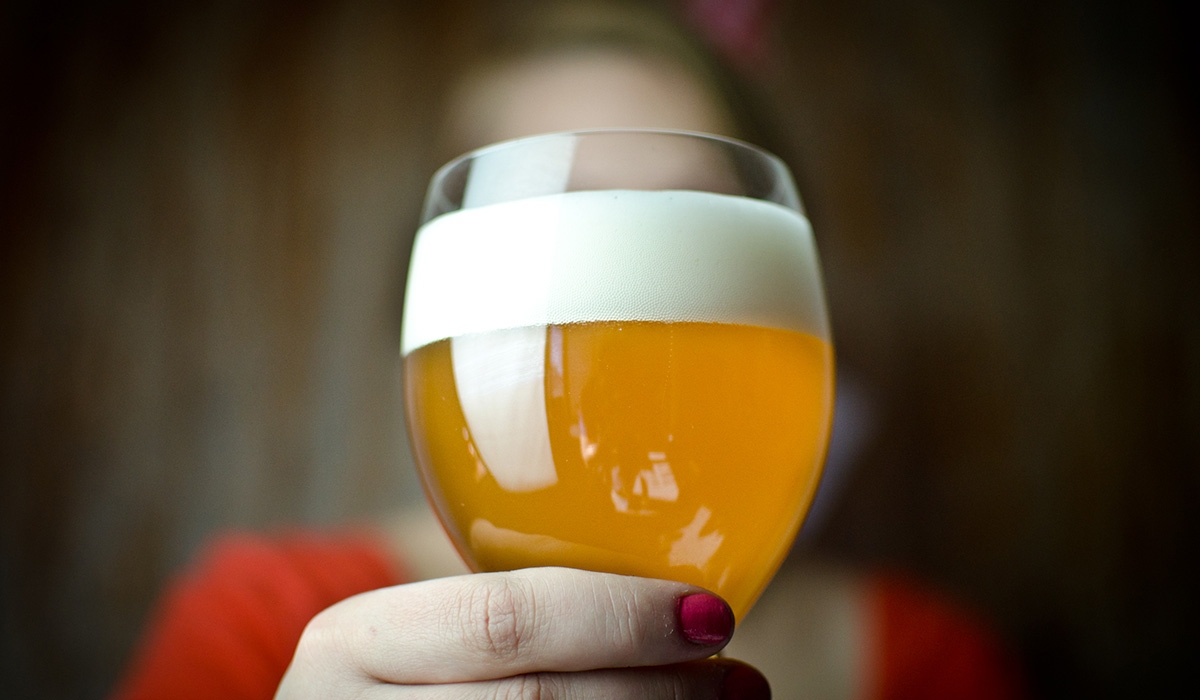How many items in our modern pantry can you pick up and imagine our ancestors holding, digesting and enjoying? Few items date as far back as barley and even fewer have emerged from human history looking and tasting the same as they did thousands of years ago.
Malt’s magnitude and how it can continue to improve the beer you drink cannot be overstated. 2017 has been a year of breakthroughs, as we search to answer this powerful question: What do we want from our malt? Our findings, which you’re about to read about, is creating a sea of change in the relationship between malt and craft brewers.
(LEARN: 75+ Popular Craft Beer Styles)
Malt in the Beginning
We humans first observed and then collected wild barley. Bright green-yellow hues and improvisational waving in the wind would have caught our eye and drawn us in for a closer look. Curious and hungry, we sought to understand the properties of this seed that developed atop long strands of grass.
Hops may be a highly sought-after seasoning, but malt used by craft brewers is the keystone ingredient in any craft beer.
Ancient hands took the barley, put it to our nose to smell and then into our mouths to taste. Our primitive minds observing, sensing, calculating and deciding that barley would allow us to thrive. A shift from gathering to planting these seeds multiplied our food supply each passing of the seasons and, in a moment of genius luck, somebody discovered that barley tasted even better once it was sprouted and dried. And then life got even better. Consuming and digesting barley became less work and provided more pleasure.
After almost a dozen millennia of enjoying jugs, barrels and pints we cannot seem to quench the desire to keep cultivating, calculating and improving this precious plant, endeavoring to make the experience more pleasurable to our senses. Within the last century, it is craft brewers who have tuned-in our pallets and invited us to consider and appreciate malt. Hops may be a highly sought-after seasoning, but malt used by craft brewers is the keystone ingredient in any craft beer. Without malt, the rich ecosystem that is beer would not survive.
(READ: Fall Cooking Trends and Beer Styles to Match)Opens in new window
Brewers Seek More Malt
In 2014, the Brewers Association, publishers of CraftBeer.com, surveyed brewers about their specific malt needs. Arising from this survey was the Malting Barley Characteristics for Craft BrewersOpens in new window white paper that summarized the survey and its initial findings.
Brewers reported six characteristics and traits that the current malt supply chain isn’t meeting, and went on further to identify bridges to these gaps. Of the six characteristics and traits identified, flavor was cited as “priority one.”

At the same time, the volume of beer produced by independent craft brewers continues to grow, and small brewers will be consuming between 40-50 percent of the barley grown and malt made in North America. For everyone who is engaged in the growing, malting and brewing of malted barley, it seems like the opportune time to start cultivating and improving the supply of this raw material.
Brewers’ desire for more malt as well as more flavorful malt could be seen as a craft crossroads.
(READ: Meet Taylor Corona, Oconee Brewing’s Renaissance WomanOpens in new window)
How Do You Describe Malt’s Diverse Flavors?
If a craft brewer checked her toolbox, she may be searching for one specific tool — the one that can do this very task of analyzing flavor in malt. This tool, if she can just find it, will help her discover the distinctive malt flavor she seeks. So, where is the tool? Did someone forget to put it back in the toolbox? Curse that neighbor who never returned it!
Actually, you might owe your neighbor an apology. As the BA points out in that 2014 survey, “No common (tool or) terminology or lexicon exists to describe the diverse range of flavors found in malts from different sources.”
It may be surprising, but it’s true. Historically, craft brewers have evaluated malts by chewing whole kernels, tasting run-off wort, and finished beer. Although these methods do offer some insight into the flavors malt has to offer, they lack the validation that comes with a more scientific approach that can be adopted by an entire industry. And without a standard approach, it’s impossible to get everyone speaking the same language.
(READ: Science Says You’re Wrong About Pairing IPAs with Spicy Foods)
Luckily, craft beer has a history of being an industry where high standards can be met through collaboration. Answering how the industry would create this new malt flavor tool would require pollination between professionals.
The American Society of Brewing Chemists Sensory Technical Subcommittee recognized the opportunity to develop a pragmatic approach to malt sensory evaluation and understood that a rapid, easy, affordable sample preparation method would benefit all members of the malting barley supply chain.
With controlled chaos of many conference calls, group emails, mailing and tasting of standardized malt samples around the country in malthouses, breweries, and quality labs in forms such as porridge, whole kernel malt, and congress wort, this group validated the development of a new standard method called the “Hot Steep Method.”
Hot Steep Method
The Hot Steep MethodOpens in new window (HSM) is most simply a standardized wort preparation procedure developed for the sensory evaluation of extractable malt flavors and aromas. The method was developed by Cassie Liscomb (co-author) at Briess Malt & Ingredients Co. and beta tested by Lindsay Barr (co-author) and Ali Schultz at New Belgium Brewing Co. and Anna Sauls at Highland Brewing Co.
 Once the method passed beta testing, it was submitted to a collaborative validation study involving nine sensory panels from the American Society of Brewing ChemistsOpens in new window (ASBC) Sensory Technical Subcommittee. The validation method, developed by Lindsay Barr, involved a series of tests to determine if the method was repeatable and sensitive. The ASBC Technical Committee reviewed the results of the study and approved the HSM at World Brewing Congress in 2016.
Once the method passed beta testing, it was submitted to a collaborative validation study involving nine sensory panels from the American Society of Brewing ChemistsOpens in new window (ASBC) Sensory Technical Subcommittee. The validation method, developed by Lindsay Barr, involved a series of tests to determine if the method was repeatable and sensitive. The ASBC Technical Committee reviewed the results of the study and approved the HSM at World Brewing Congress in 2016.
(READ: The New England Style IPA is The Anti-IPAOpens in new window)
The rapid and broad adoption of the HSM throughout our industry in the past 12 months spotlights the need for such a tool. Perhaps we could all sit back, pour a distinctive, flavorful malty brew and enjoy the fruit of our collective labor — but that would be like a parent deciding that their job was complete once the baby was born.
But our job wasn’t done yet. We were just scratching the surface. Just because we created the tool does not mean that we have established or navigated the routes that take us to our final destination: creating more flavorful, distinctive malt for beer. The next step we had to take was finding a common language to describe the experience of tasting these malts.
The Common Language of Malt
Language influences how we view flavor. It shapes what breeders target when developing new and flavorful varieties; It determines how maltsters produce, market and sell their malt to brewers who have specific flavor profiles in mind.
Eager to apply the new HSM, the ASBC Sensory Technical Subcommittee quickly began work on developing a comprehensive Base Malt Flavor Lexicon — a common language — to help bridge the gap between brewers, maltsters, growers and breeders.
This project involved selecting and evaluating samples spanning the diverse flavor space within base malts. The group selected nine malts, encompassing nine different varieties from nine regions, malted by six different maltsters. The team then sent samples to 14 participants with functioning sensory panels: three large brewers (over 300K barrels annual production), two small brewers (under 150K barrels annual production), three small maltsters, three large maltsters, and three industry consultants.
(LEARN: CraftBeer.com’s Big Beer Glossary)
Panels were instructed to prepare each malt sample using the ASBC HSM and generate a list of perceived aroma qualities. The panels returned more than 4,000 unique aroma terms. The core team took the list and paired it to 20 primary aroma descriptors encompassing 83 specific terms.
The lexicon and method can now be visualized with the Base Malt Flavor Map (soon to be available in the ASBC store) and has been integrated digitally into the DraughtLab AppOpens in new window. The Base Malt Flavor Map is designed to help users describe the flavor of their malt, setting the baseline for a robust quality assurance and research and development program.

Next Steps for Our Malt Flavor Research
The next step to reach our final destination will further employ the ASBC Sensory Committee to take the newly developed lexicon and create standards associated with each term so that individual panels throughout the industry can be trained using the same flavor anchors.
Think about it: Within one year, our industry went from having no standard method for malt flavor extraction and no standard language on which to communicate or train, to having both an ASBC validated method and a lexicon generated through collaborative efforts of brewers and maltsters alike. This work has set the foundation on which flavor research, quality control and new product innovations will be built for many years to come.
With these foundational tools, we can now start asking more specific questions. One example of a major question that can now be asked and answered by employing the HSM, standard Base Malt Flavor Map, and a well-designed research project is: “How much does base malt flavor matter when it comes to beer flavor acceptance?” This is a beautiful example of next steps underway that delves into the complex world of barley, malt and beer. Stay tuned …
About the Authors: Lindsay Barr is a Sensory Specialist at New Belgium Brewing Company and Co-Founder of DraughtLab Sensory Software. Cassie Liscomb is a scientist who works in the Technical Services Department at Briess Malt & Ingredients.; Andrea Stanley is the Owner/Maltster of Valley Malt.
CraftBeer.com is fully dedicated to small and independent U.S. breweries. We are published by the Brewers Association, the not-for-profit trade group dedicated to promoting and protecting America’s small and independent craft brewers. Stories and opinions shared on CraftBeer.com do not imply endorsement by or positions taken by the Brewers Association or its members.

Share Post